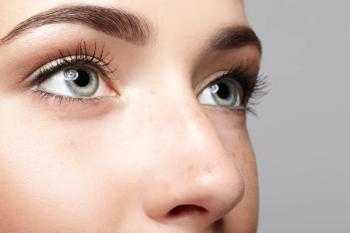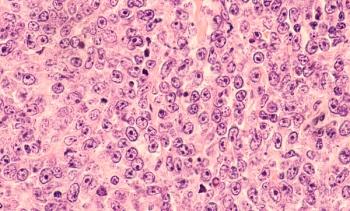
Medications, Laser Can Be Used to Treat Glaucoma

Medication, laser, and surgery are all methods of treating glaucoma according to Jonathan Eisengart, MD.
Jonathan Eisengart, MD, an ophthalmologist at Cleveland Clinic, explained how different patients can utilize different methods of treating their glaucoma depending on their preference and the severity of the condition.
Transcript
What are some methods of treating glaucoma?
All treatment strategies for glaucoma involve lowering eye pressure, and so there's really 3 ways we can lower eye pressure. We have medicine, laser and surgery. So medicines are, historically, the mainstay of treatment, and medicines almost always mean eye drops. There's different eye drops that we can use to lower the pressure. Eye drops are generally used once or twice a day, but there's a few types of medications that we might even administer 3 and rarely 4 times a day. Eye drops can lower pressure in 2 ways. One is they can cause the eye to produce less fluid inside of the eyeball, so the pressure in the eye is controlled by how much fluid is produced and how fast that fluid drains out of the eye. There's a constant turnover of fluid within the eyeball, and just to be clear, I'm not talking about tears that are on the surface of the eye what comes out when you cry. I'm talking about the fluid inside of the eyeball. So eye drops can decrease the production of fluid, or they can increase how easy it is for the fluid to drain out of the inside of the eyeball. So those are the two ways that medicines can lower the pressure.
There's also laser that we can use to lower the pressure, and this is being used, I would say, more and more commonly these days. There's a couple advantages to laser over medications. One is that you have the laser once, and once you have the laser, it's done and it's working, unlike medicines, which you can forget to use and the pressure may go up if you skip a dose. That doesn't happen with laser. The laser treatment works by treating the internal drainage canal of the eye. It helps the fluid leave the eye more easily. So laser, the most commonly performed laser for eye pressure lowering is called SLT [or] selective laser trabecula plastic. It's usually done in a in a single treatment that takes, honestly, it takes me about 2 or 3 minutes to treat an eye with laser. There's very, very little pain during the laser, a little soreness afterwards, but usually by the next day, people are feeling pretty good. A single laser treatment can lower pressure in the eye for as short as 6 months or as long as 10 years. I've seen it both ways. Laser doesn't work for everybody, and not everybody, is a candidate, but many, many people respond well to laser treatment. Laser is about as effective as 1 or maybe in a few cases, 2 medications. So laser is an alternative for people who are on 1 or 2 medications, or if people are on more than that, it can help the medicines work better. As I said, the effect eventually wears off. If it works well the first time, it's definitely worth trying again. People can have repeated laser procedures over the years, and it can work, but again, it usually replaces 1 and rarely can replace 2 medications, since many patients, many people with glaucoma are on more than 1 medication, the laser isn't typically the only thing they need to treat glaucoma, but it's definitely a tool.
And then the last option, as I said, there's medicines, laser, and surgery. So surgery for glaucoma is directed at lowering the pressure, and we usually reserve surgery for people where medicines and laser aren't working. Some of the newer procedures are minimally invasive. Some of the newer glaucoma surgeries are minimally invasive, and they all focus on helping the eye fluid exit the eye through the natural drainage inside of the eye. They help that eye's natural drainage system work better. That's our minimally invasive surgeries. And those actually can be done even in people where medicine and laser are sort of working okay, particularly, let's say,you're somebody who's on 2 or 3 different glaucoma medications, and as you get older, you develop a cataract, and you need cataract surgery many times. We can do a minimally invasive glaucoma surgery at the same time as cataract surgery to help lessen your need for glaucoma medications after surgery, going forward and then just kind of make life a little bit easier for you, a little bit less expensive vs buying those medications over time. Also, the medications can have some side effects, like redness of the eye or dryness and irritation. So that's another reason why we might want to do one of the more minimally invasive procedures, or even the laser, to try to get somebody off. And then for eyes that are really sick with very high pressure, that aren't responding to lesser treatments, we have our more traditional glaucoma surgeries that involve different ways of making a new drainage pathway or new drainage canal for fluid to leave the eye that way, and those can be really effective in getting the eye pressure way, way down for people who need it.
Newsletter
Stay ahead of policy, cost, and value—subscribe to AJMC for expert insights at the intersection of clinical care and health economics.







































